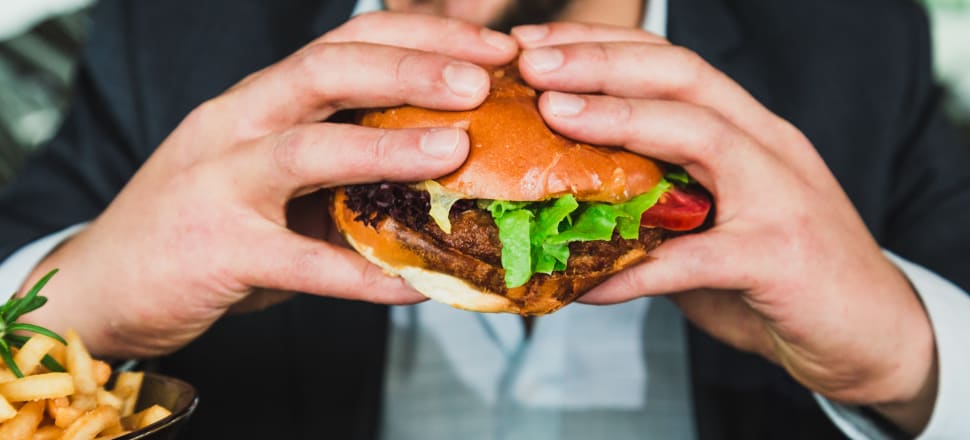
We need a radical change from our industrialised farming with all the collateral damage that’s caused to nature and humans – and a fundamental shift in people's understanding is underway
Opinion: The global food system produces enough to feed between 10 billion and 14 billion people a year, even though there are only 8 billion of us on the planet, British writer George Monbiot reports in his latest book Regenesis: Feeding the world without devouring the planet.
But he says the way we produce that food is massively destructive to the planet’s ecosystems, while a high proportion of it is wasted and un-nutritious, with some even damaging to human health. Moreover, the intense concentration of economic power in the hands of few producers is making the global food system much less resilient and far more susceptible to supply and price shocks.
“Farming is the most destructive human activity ever to have blighted the Earth,” he writes.
In the first half of the book, Monbiot makes his case about the deep damage modern farming practices do to Earth systems, literally the life-support systems of all living things including humans. Land use is “the issue that makes the greatest difference to whether terrestrial ecosystems and Earth systems survive or perish,” he says.
Some facts: Human habitation covers 1 percent of the world’s land surface; crops over 12 percent; some 15 percent is protected for nature; and land grazed by farmed animals covers 28 percent. But those animals provide only 1 percent of the protein humans consume.
The book “shows how the myth of the green and pleasant farm is deeply ingrained,” the New Scientist magazine says in its review, citing its own section on farming as corroborating evidence.
As for concentration, almost 60 percent of the calories produced by farmers come from just four crops: soya, maize, wheat and rice. This reflects, Monbiot says, the rise of the ‘Global Standard Diet’ (which is western with lots of meat and dairy) produced by the ‘Global Standard Farm’.
“I think we are beginning to see an alignment of technological change, systemic fragility and public disquiet sufficient to trigger a techno-ethical shift, of the kind catalysed by the printing press and the contraceptive pill, that could allow us to recast our relationship with the living planet.” – George Monbiot
Moreover, a select group of major multinationals such as Monsanto have excessive power over some key farm inputs, while others such as Cargill and ADM exercise similarly tight control over trading and distribution of some commodities.
Monbiot is deeply unhappy about all of the above, but particularly the grazing of animals, because of the huge disparity between land used and protein supplied. He is no fan of feedlot-farming but he considers pasture-fed worse:
"While cattle and sheep need a great deal of land, however they are raised, beef finished on grain in an intensive feedlot system needs (for both the grain growing and the cattle keeping) roughly one-twentieth of the area required by beef reared entirely on pasture.
“This is why the nation with the world’s greatest hunger for land is New Zealand. If everybody ate the average New Zealander’s diet, which contains plenty of free-range lamb and beef, another planet almost the size of Earth would be needed to sustain us.”

In the second half of his book, Monbiot lays out solutions. He urges farmers to play big roles by using land more sustainably to produce food while also helping to restore ecosystems, starting with the health of soils themselves.
But he is scathing of some approaches to that. He dismisses regenerative ways to farm livestock. He says, for example, that the efforts of Allan Savory, a rancher and ecologist, to replicate the movement of cattle in the wild as “rambling and unconvincing.”
In a similar vein, he says the Soil Association, the UK’s leading organic certifier, has a set of rules on soil fertility “that makes a mockery of what organic farming claims to be.”
Monbiot offers no suggestions about New Zealand's farming future. Thankfully, though, a growing number of Kiwis are working on it. They are deeply committed, knowledgeable and ambitious people collaborating across many inter-dependent sectors in farming, food, forestry, science, technology, ecosystem health and restoration, conservation and climate to name many but not all fields.
Our challenges are very complex, and our opportunities diverse. But in essence we have to figure out how to farm animals in climate compatible ways. The utterly critical, twinned goals are zero emissions and ecosystem restoration. Solutions will include greater diversity of crops and diets, land use and biodiversity. If we can lead on both, we have a long-term future as guardians of the land and producers of food.
But the primary sector's leaders defend their past; they deny their future, as I discussed in last week's column.
Back to Monbiot. He is particularly fascinated by soil, as he describes in his opening chapter. But even if we stop grazing animals and retire some of the land to give nature more of a chance, turn over the rest to crops and drastically improve the health of soils we still won’t be able to produce enough food as the human population expands.
He argues we can fill the yawning gap with proteins brewed in fermentation tanks. One of his main examples of such pioneering food producers is Pasi Vainikka of Finland who co-founded Solar Foods only five years ago.
Monbiot says Vainikka is “a brilliant scientist and visionary entrepreneur” who is “fermenting a revolution” driven by an ambition to “conjure food from air.” Solar Foods claims its bacteria-based protein is “100 times more efficient in converting energy to calories than animals.”
But for all his enthusiasm for diving into the minutest details of soils, Monbiot applies nowhere the same rigour to new forms of food and nutrition. He says, for example, that Solar Foods’ protein contains “all nine essential amino acids,” although he concedes “more assessment is needed.”
In fact, the science of food and nutrition, whether from old natural sources or new artificial ones, is still in its relative infancy. Likewise, we have to learn a vast amount quickly about our land use, farming systems and restoration of ecosystems. It’s a radical change from the simplification of production systems that has led to the industrialisation of farming over the past half century, with all the collateral damage that’s caused to nature and humans.
The first step is for a critical mass of people to understand and want such a fundamental shift. Monbiot detects one is underway:
“I think we are beginning to see an alignment of technological change, systemic fragility and public disquiet sufficient to trigger a techno-ethical shift, of the kind catalysed by the printing press and the contraceptive pill, that could allow us to recast our relationship with the living planet.”
Regenesis: Feeding the world without devouring the planet by George Monbiot, was published globally this week by Allen Lane







